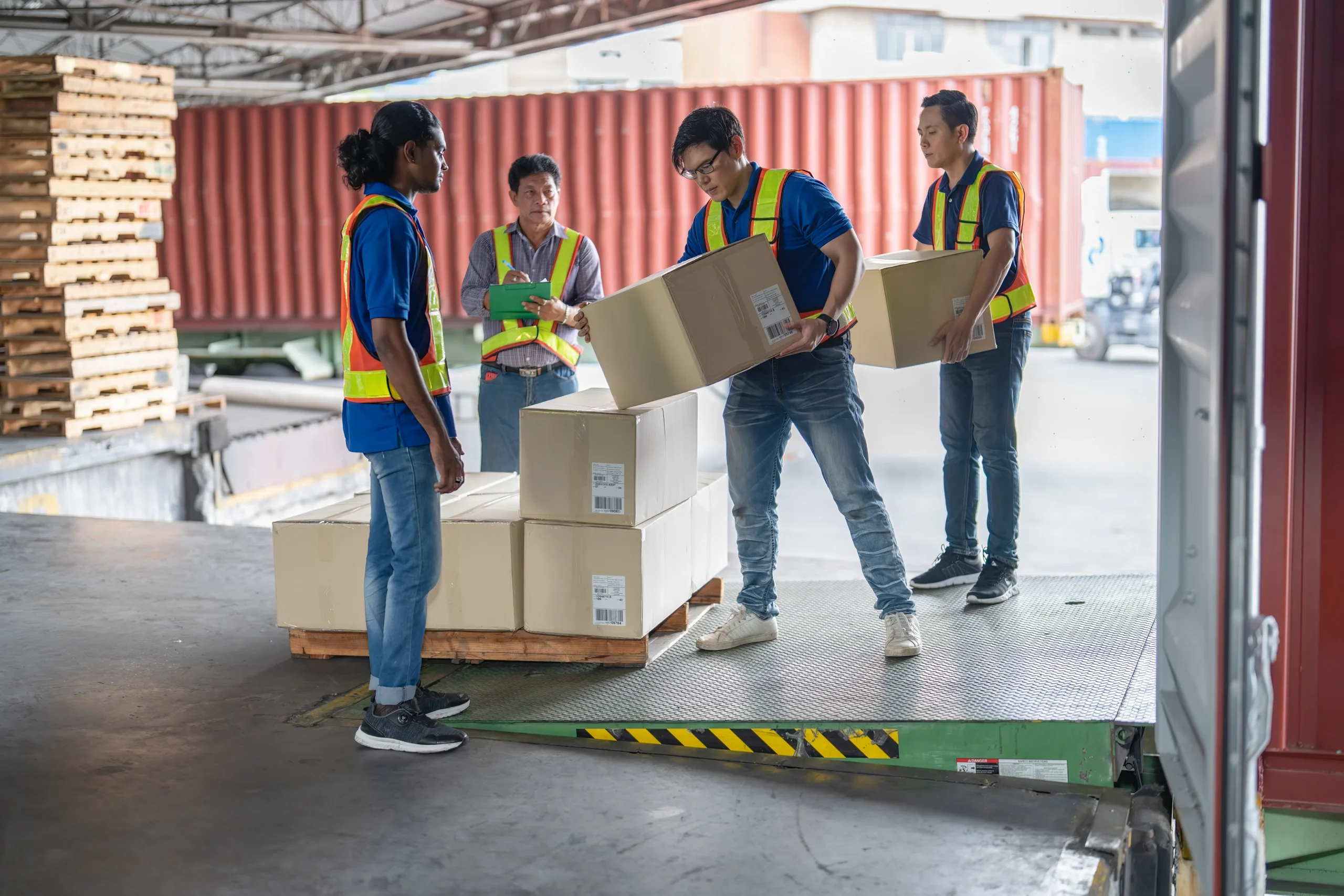Table of Contents
ToggleCross-docking is a logistics practice that eliminates the need for long-term warehousing by transferring goods directly from inbound trucks to outbound carriers. At its core, it’s about efficiency.
Instead of storing products in a warehouse for days or weeks, they are sorted, repackaged, and sent out to their final destinations within hours. This approach is particularly popular in industries like retail and grocery, where speed and turnover are critical.
At Tri-Link FTZ, we’ve seen firsthand how cross-docking can transform supply chains. However, I always advise businesses to carefully consider whether the benefits outweigh the challenges.
While the strategy is appealing for reducing warehousing costs and speeding up delivery, the disadvantages can pose significant risks if not managed properly.

One of the most notable cross-docking disadvantages is its dependency on precise coordination and timing. As a third-party logistics provider, we’ve encountered situations where even a slight delay in supplier deliveries can disrupt the entire operation.
Without seamless communication between suppliers, transportation providers, and warehouse staff, cross-docking can result in missed deadlines and unhappy customers. Another challenge is the high initial investment required to set up a cross-docking terminal.
This includes specialized equipment, warehouse management systems, and transport networks. For small or medium-sized businesses, these costs can be prohibitive.
Even larger organizations may find the financial commitment daunting if cross-docking doesn’t align perfectly with their operational needs. Additionally, cross-docking is not ideal for every type of product.
It works best for items with high turnover rates or consistent demand, such as perishable goods or retail products. However, for businesses dealing in fragile or specialized items that require careful handling or longer storage, the method can lead to increased product damage or logistical inefficiencies.
Furthermore, the reliance on reliable suppliers cannot be overstated. If suppliers fail to deliver the right products in the correct quantities at the scheduled time, the entire system breaks down.
At Tri-Link FTZ, we’ve mitigated this risk by establishing strong supplier relationships, but for businesses new to cross-docking, this can be a steep learning curve. Finally, cross-docking demands a sufficient fleet of transportation carriers.
For businesses with limited resources or inconsistent shipping volumes, this can lead to underutilized trucks or inflated transportation costs.
When cross-docking isn’t executed properly, the repercussions can ripple through the entire supply chain. Delays in shipments, for instance, can result in stockouts at retail locations, ultimately affecting customer satisfaction.
From our experience, we’ve seen how the lack of a robust backup plan can lead to financial losses and damage to a company’s reputation. Additionally, the high costs of implementing and maintaining a cross-docking operation can eat into profit margins.
While the promise of reduced storage costs is enticing, businesses often underestimate the hidden costs, such as additional labor for sorting and the need for advanced tracking systems. Another significant impact is on scalability.
Cross-docking operations require a consistent volume of goods to remain cost-effective. For businesses with fluctuating demand or seasonal peaks, this inconsistency can lead to underutilized resources and inefficiencies.
Not all industries are a good fit for cross-docking. For example, small-scale businesses often struggle with the initial setup costs and operational demands.
Similarly, industries dealing with irregular demand patterns, such as fashion or luxury goods, may find cross-docking unsuitable due to the unpredictability of their supply chains. At Tri-Link FTZ, we’ve seen success with industries like grocery and retail, where rapid turnover is essential.
However, even in these sectors, businesses must carefully evaluate their supplier relationships and logistics infrastructure. For instance, companies dealing in perishable goods benefit from the speed of cross-docking but must ensure their cold chain logistics are impeccable.

To mitigate the challenges of cross-docking, investing in advanced technology is critical. Warehouse Management Systems (WMS) and real-time tracking tools can streamline operations and minimize errors.
At Tri-Link FTZ, we’ve integrated cutting-edge solutions to enhance visibility and efficiency in our cross-docking operations. Building strong supplier relationships is another essential strategy.
Reliable suppliers who understand your operational needs can make or break a cross-docking system. Regular communication, performance reviews, and collaborative planning are key to ensuring smooth operations.
Effective transportation planning is equally important. Collaborating with carriers to optimize routes and consolidate shipments can significantly reduce costs. Additionally, we recommend starting with a hybrid model, combining traditional warehousing and cross-docking.
This allows businesses to test the waters without fully committing to the system. To read more click here.
While cross-docking can reduce storage costs, it comes with hidden expenses that businesses must account for. For instance, the initial setup costs for cross-docking terminals and technology can be substantial.
At Tri-Link FTZ, we often work with clients to identify cost-effective solutions, such as shared facilities or phased implementations. Labor costs are another consideration.
Although cross-docking minimizes handling, the need for skilled staff to manage sorting and coordination can offset some of the savings. Additionally, the costs of maintaining a reliable fleet and dealing with supplier inconsistencies can add up over time.
Determining whether cross-docking is a good fit requires a thorough evaluation of your supply chain needs. Start by assessing your product types, turnover rates, and supplier relationships.
For businesses dealing in perishable goods or high-demand items, cross-docking can offer significant benefits. However, for those with complex or unpredictable supply chains, the risks may outweigh the rewards.
We’ve helped businesses across various industries navigate this decision-making process. At Tri-Link FTZ, our approach involves analyzing key factors such as transportation costs, supplier reliability, and customer demands.
By understanding these elements, we can help you determine whether cross-docking aligns with your operational goals.

For businesses where cross-docking isn’t a viable option, alternative strategies can still optimize supply chain efficiency. Traditional warehousing, for instance, provides flexibility for products with longer shelf lives or inconsistent demand.
Just-in-time (JIT) logistics is another approach that minimizes inventory while ensuring timely deliveries. Hub-and-spoke distribution models offer centralized logistics solutions, reducing costs and improving scalability.
Additionally, collaborative distribution, where businesses share resources and transportation networks, can be an effective way to manage costs while maintaining efficiency.
Minimizing risks in cross-docking requires a proactive approach. Regular audits and performance reviews are essential for identifying inefficiencies and areas for improvement.
Employee training and process standardization can also enhance operational consistency. Investing in backup plans, such as maintaining a small inventory buffer, can provide a safety net during disruptions.
At Tri-Link FTZ, we’ve developed contingency strategies to address unexpected challenges, ensuring our clients’ supply chains remain resilient.
One example from our experience involved a retailer struggling with supplier delays. By implementing real-time tracking and establishing clearer communication protocols, we helped them reduce delays and improve customer satisfaction.
Another case involved a business transitioning to a hybrid model. By combining traditional warehousing with cross-docking, they achieved greater flexibility and efficiency.
These examples illustrate the importance of tailoring cross-docking solutions to meet specific business needs.

Technology plays a crucial role in overcoming cross-docking disadvantages. Automated sorting systems and real-time tracking tools enhance efficiency and reduce errors.
Data analytics can provide valuable insights for demand forecasting and shipment planning. At Tri-Link FTZ, we leverage cutting-edge technology to optimize our cross-docking operations.
From IoT devices for monitoring product conditions to AI-powered routing systems, our solutions are designed to address the unique challenges of cross-docking. To read more click here.
Cross-docking is a highly efficient logistics strategy that offers significant benefits when executed correctly, but it is not without its challenges. As discussed, the disadvantages of cross-docking—from dependency on reliable suppliers and transport carriers to high initial investment costs and complex planning requirements—can pose substantial risks for businesses.
However, with careful planning, the right technology, and strong supplier relationships, these challenges can be mitigated effectively.
At Tri-Link FTZ, we bring over 35 years of experience in third-party logistics and foreign trade zone operations to help businesses make informed decisions about their supply chain strategies. Whether you’re exploring cross-docking for the first time or looking to optimize your existing processes, our team is here to guide you through every step.
If you’re considering cross-docking as part of your supply chain strategy, we encourage you to evaluate your specific business needs carefully. Ask yourself: Do you have the supplier reliability, transport network, and volume consistency to make cross-docking work for you?
If not, alternative models like hybrid logistics or traditional warehousing may be more suitable. Cross-docking is not a one-size-fits-all solution, but when applied in the right circumstances, it can be a game-changer.
The key lies in understanding your operational goals, identifying potential risks, and implementing the right tools and strategies to overcome those challenges.
We hope this guide has provided valuable insights into the disadvantages of cross-docking and how to address them. If you have any questions or would like to learn more about how Tri-Link FTZ can support your logistics needs, feel free to contact us or explore our services on our website. Together, we can build a more efficient, resilient supply chain for your business.
Share this article
We have other resources available upon request as well as one-on-one support and personalized answers, just like our services.
Simply contact us anytime and we’ll get back to you to answer your questions and provide meaningful answers that show you how Tri-Link supports your logistics, reduces costs, and accelerates efficiency.
Tri-Link delivers exceptional FTZ and 3PL services tailored to your global trade needs.
Our solutions combine innovation, quality, and efficiency to exceed your expectations and meet your specific requirements.